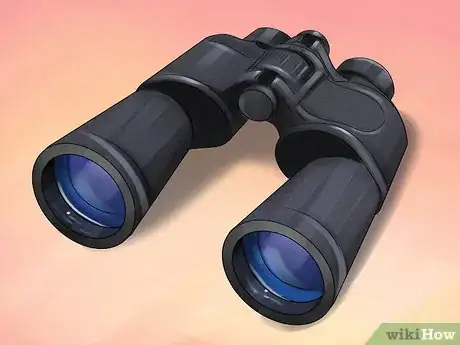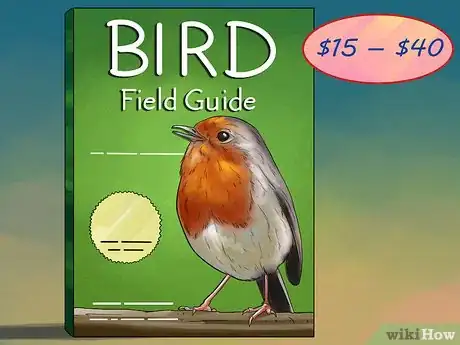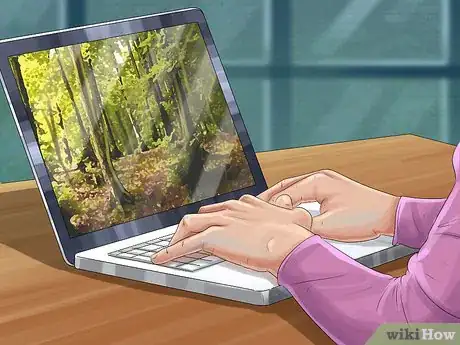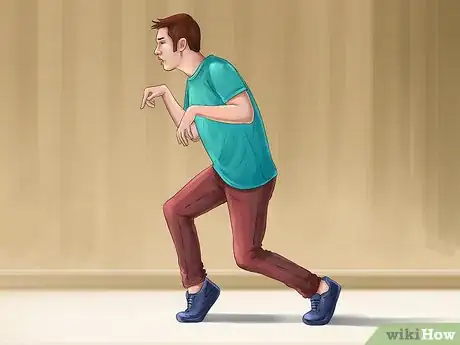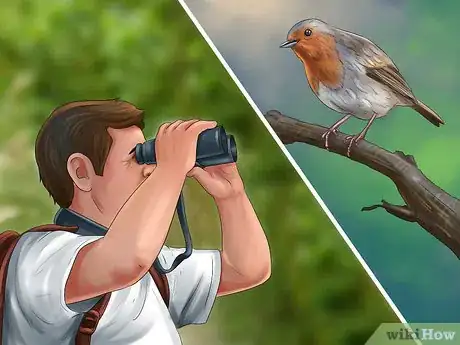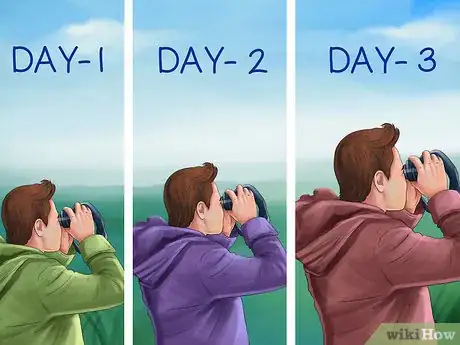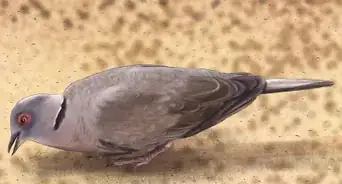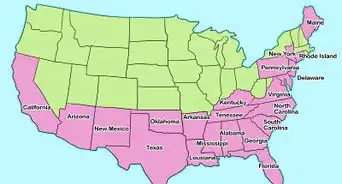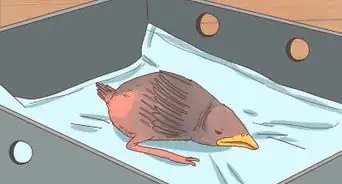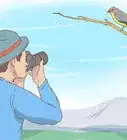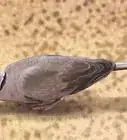This article was co-authored by Roger J. Lederer, PhD. Dr. Roger Lederer is an Ornithologist and the founder of Ornithology.com, an informative website about wild birds. Dr. Lederer has spent over 40 years teaching, studying, and writing about birds. He has traveled to over 100 countries to study birds. Dr. Lederer is an Emeritus Professor of Biological Sciences at California State University, Chico, and has been a Department Chair of Biological Sciences and Dean of the College of Natural Sciences. He has written more than 30 research papers and 10 books on birds and a textbook entitled “Ecology and Field Biology.” Dr. Lederer has consulted the BBC, National Geographic, National Public Radio, ABC News, the Guinness Book of World Records, and numerous other organizations and publications.
There are 7 references cited in this article, which can be found at the bottom of the page.
This article has been viewed 31,075 times.
Birdwatching is a fun pastime that promotes both physical and mental activity. It requires you to walk around to spot the birds, helping your body stay active. You also have to compare the characteristics of the birds you see to those listed in your field guide, always pushing your brain to learn more about the topic. If you are interested in becoming a birdwatcher, there are a few things you need to consider before you start your journey.
Steps
Preparing Yourself for Birdwatching
-
1Get some good binoculars. To be a good birdwatcher, you’ll need a solid pair of binoculars to help you spot those birdies from a distance. Try to find a local nature center that will let you try out different kinds of binoculars before you spend your money purchasing one.[1]
- Ideally, choose binoculars with a magnification of 7x50 or 8x29. These will help you see the birds clearly, but they're lightweight enough that you can carry them around easily. Higher magnifications are more bulky and are best used with a tripod, and lower magnifications will have a smaller field of view.[2]
- Look for binoculars that are waterproof in case you drop them in a puddle.
- A good pair will probably cost you between $100 and $300.
- You could also use a telescope, though these are significantly less portable than binoculars.
-
2Purchase a bird field guide. The field guide is important because it allows you to match what you’ve seen in nature to the accurate species. This is how you start fine tuning your knowledge and learning about various species of birds.[3]
- A good field guide should cost you between $15 and $40.
- Some guides use photographs of the different bird species, while others use paintings and illustrations. Decide which kind you like better.
- Try to begin with a field guide that is specific to your geographical region. This will help keep you from getting overwhelmed in the beginning when you are still learning.
Advertisement -
3Create a birdwatching pack. Depending on how long you stay out birdwatching and how far you travel from home, you may need to bring some important items with you. Pack a small bag or backpack with the following items:[4]
- Several bottles of water
- Some food
- Jacket and/or change of clothes
- Lantern
- Pocketknife
- Insect repellent
- Notebook to record your findings
- Sleeping bag and tent (for overnight excursions)
Going Out to Birdwatch
-
1Choose a location. Go to a park or place where you suspect there will be a lot of birds. This means finding places where birds usually live – near water, trees, or feeding sites. Check the internet or your local field guide for recommendations about places to start your birdwatching adventure.[5]
-
2Walk slowly and quietly. You don’t want to startle the birds as you enter their habitat. So try to keep the noise and interference to a minimum. Walk as quietly as possible and make a serious effort to walk slowly through the area.[8]
- This will help you from scaring the birds away.
-
3Pick a place to settle down. Choose a location to sit down – on a bench, on the ground, wherever you can make yourself the most comfortable. Stay very still and use a notebook and pencil to record the birds you see. If you don't know the name of a bird you have seen, try to draw a picture.
- It may take a little time for you to find a bird, but letting them come to you is a better way to observe them in their natural habitat than trying to search them out as this might scare them off.
Identifying Birds
-
1Observe the bird. Once you spot a bird, spend some time observing it. Use your binoculars to inspect the bird without getting too close so you don’t scare it. Focus your binoculars so you can see the bird as clearly as possible. Enjoy this glimpse into the natural world and absorb what you can.
- Watch how the bird behaves, its mannerisms, and listen for any sounds it makes.
-
2Notice any distinguishing features. In order to identify the bird, you’ll need to observe certain markings and features that can help you differentiate what specific type of bird it is. Notice the coloring, any unique markings, or any identifying features on its head or tail.
- First, identify the most obvious feature of the bird. This characteristic is called a bird’s field mark and will help you identify the bird.
- Start at the top of the bird’s head and work your way down. This will help you keep your clues organized and to develop a system of observation and identification over time.
-
3Make a list of birds you see. Keeping track of the birds you see is a fun activity for you as a birdwatcher. But it will also help you make discoveries about what kinds of birds can be found in various areas.
- This isn’t a requirement for birdwatchers, but if you want you can use the information from your list to help organizations that collect bird-related data.
-
4Keep birdwatching regularly. As with any hobby, the more you practice birdwatching, the better you will become at identifying the various species. This will probably make the activity more enjoyable to you over time. With practice you will be able to identify more birds more quickly, and you will know where to find them.
Expert Q&A
-
QuestionWhat are the best binoculars for birdwatching?
 Roger J. Lederer, PhDDr. Roger Lederer is an Ornithologist and the founder of Ornithology.com, an informative website about wild birds. Dr. Lederer has spent over 40 years teaching, studying, and writing about birds. He has traveled to over 100 countries to study birds. Dr. Lederer is an Emeritus Professor of Biological Sciences at California State University, Chico, and has been a Department Chair of Biological Sciences and Dean of the College of Natural Sciences. He has written more than 30 research papers and 10 books on birds and a textbook entitled “Ecology and Field Biology.” Dr. Lederer has consulted the BBC, National Geographic, National Public Radio, ABC News, the Guinness Book of World Records, and numerous other organizations and publications.
Roger J. Lederer, PhDDr. Roger Lederer is an Ornithologist and the founder of Ornithology.com, an informative website about wild birds. Dr. Lederer has spent over 40 years teaching, studying, and writing about birds. He has traveled to over 100 countries to study birds. Dr. Lederer is an Emeritus Professor of Biological Sciences at California State University, Chico, and has been a Department Chair of Biological Sciences and Dean of the College of Natural Sciences. He has written more than 30 research papers and 10 books on birds and a textbook entitled “Ecology and Field Biology.” Dr. Lederer has consulted the BBC, National Geographic, National Public Radio, ABC News, the Guinness Book of World Records, and numerous other organizations and publications.
Ornithologist The best binoculars for birdwatching are 7x35 or 8x42—the first number is the magnification and the second is the diameter of the front lens in millimeters, which controls how much light the lens lets in. Higher numbers like 10x50 mean higher magnification and more light, but they're heavier and they magnify movement, so they're better to use with a tripod. On the other hand, magnifications like 8x20 are lightweight and easy to carry, but they have a smaller field of view and let in the least light.
The best binoculars for birdwatching are 7x35 or 8x42—the first number is the magnification and the second is the diameter of the front lens in millimeters, which controls how much light the lens lets in. Higher numbers like 10x50 mean higher magnification and more light, but they're heavier and they magnify movement, so they're better to use with a tripod. On the other hand, magnifications like 8x20 are lightweight and easy to carry, but they have a smaller field of view and let in the least light. -
QuestionCan I also take picture of the birds?
 Community AnswerYes, but make sure your camera doesn't make noise that will scare the birds away, and don't use your flash.
Community AnswerYes, but make sure your camera doesn't make noise that will scare the birds away, and don't use your flash. -
QuestionIf I take a picture will the birds not come back, and what is the cheapest camouflage available?
 Amy HarrisonTop AnswererA snapshot will not discourage birds from the area. The pricing of camouflage entirely depends on your area. You can search for secondhand camouflage on online sites such as eBay, or consider purchasing a bird-watching hide. A hide is a camouflaged hut you can hide inside.
Amy HarrisonTop AnswererA snapshot will not discourage birds from the area. The pricing of camouflage entirely depends on your area. You can search for secondhand camouflage on online sites such as eBay, or consider purchasing a bird-watching hide. A hide is a camouflaged hut you can hide inside.
Warnings
- Make sure you don’t get too close to a bird's nest as it may abandon it. Treat wildlife with respect.⧼thumbs_response⧽
- Bring your field guide with you. It's very difficult to identify a bird from your guide long after you last viewed the information.⧼thumbs_response⧽
- Some birds may attack you if you come too close to them. Be cautious.⧼thumbs_response⧽
References
- ↑ Roger J. Lederer, Ph.D. Ornithologist.
- ↑ Roger J. Lederer, Ph.D. Ornithologist.
- ↑ http://www.audubon.org/news/how-begin-birding
- ↑ http://www.audubon.org/news/the-audubon-guide-birding-gear
- ↑ https://www.nwf.org/News-and-Magazines/National-Wildlife/Birds/Archives/2010/Top-Spring-Birding-Spots.aspx
- ↑ http://www.wildbirds.com/Find-Birds/North-American-Hot-Spots
- ↑ http://www.birdwatchingdaily.com/hotspots-near-you/
- ↑ Roger J. Lederer, Ph.D. Ornithologist.
- ↑ http://www.ksbirds.org/kos/Color.htm
About This Article
If you want to be a birdwatcher, go to a park with water or trees, which is where birds like to live. You can also look online for well-known birdwatching spots in your area. Once you’re at your chosen location, remember to walk slowly and quietly so you don’t scare any birds away. Rather than going around searching for birds, find a comfortable place where you can sit still for a while in order to observe them in their natural habitat. When you see a bird, take note of its coloring and any distinguishing features so you can identify it correctly. For more tips, including what kind of binoculars to buy for your birdwatching, read on!
